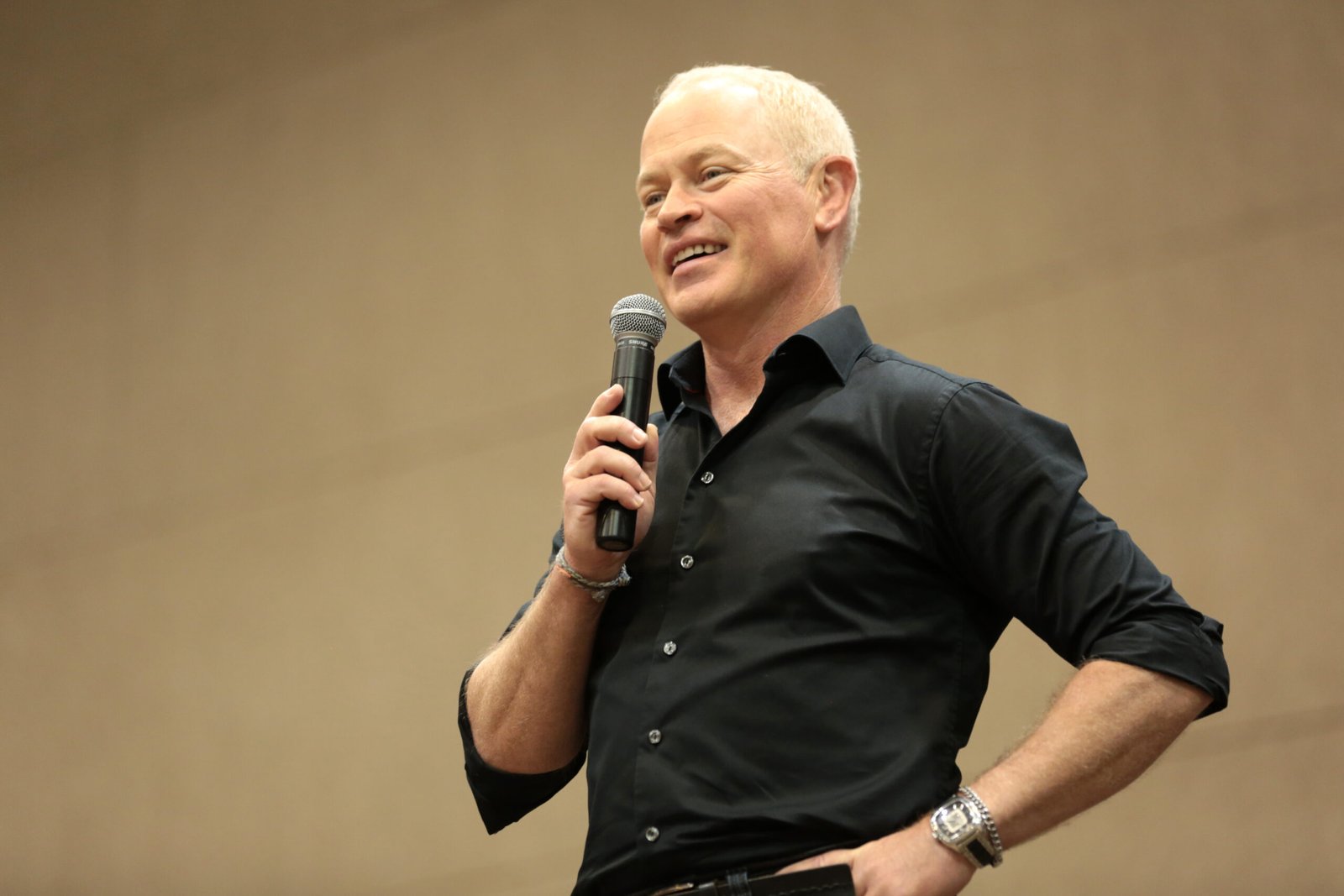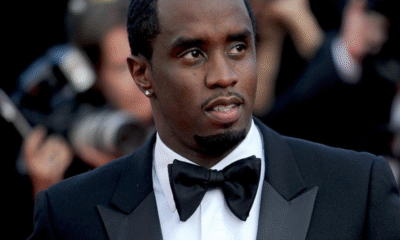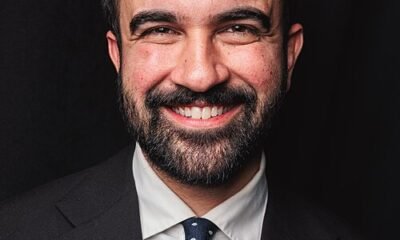Entertainment
Your Resolution Is to Add These Songs to Your New Year’s Eve Playlist on December 30, 2023 at 3:00 pm Us Weekly
Who needs “Auld Lang Syne” when you’ve got Mariah Carey, ’NSync, and Taylor Swift?
December 31 is still awash in the echoes of Christmas music, but there are plenty of New Year’s Eve songs to blast as the final seconds of the year whittle down. Yes, there’s old standby “Auld Lang Syne” — a song written by Scottish poet Robert Burns in 1788 — but there are more contemporary New Year’s Eve songs to play as you pop champagne while rocking those novelty 2024 glasses.
There are classic tracks from Ella Fitzgerald, Nat “King” Cole, Otis Redding and Carla Thomas. Death Cab for Cutie has a fuzz-drenched anthem for the broke and brokenhearted. There’s even an excellent ska track from Montreal’s The Planet Smashers, something to play ahead of Carey’s club banger. There are even some slow tracks from Abba and Barry Manilow for those quieter moments.
In addition to the following suggestions for your NYE playlist, there are plenty of songs unrelated to the holiday that you could include. Prince’s “Kiss” always makes for a good song to blast when the clock strikes midnight and you’re supposed to kiss someone for good luck. Europe’s “The Final Countdown” is good if you’re in a hair-metal mood. R.E.M’s “It’s the End of the World as We Know It (And I Feel Fine)” began as an ironic song for New Year’s Eve, but in recent times of political and environmental upheaval, the 1987 track is more appropriate than ever.
However grim the future may be, New Year’s Eve is a time to celebrate the potential that lies before us all. So, to get you in the mood, here are a few songs to put on before the Times Square ball drops — and one to blast after it’s all said and done:
Taylor Swift, “New Year’s Day”
Swift has seemingly confirmed that her 2017 album, Reputation, will be the next entry in the Taylor’s Version series. This means Swift’s self-described “goth-punk moment” will be the penultimate release before she completes the rerecording series with a new edition of her 2006 self-titled album. So, with Reputation (Taylor’s Version) on tap for 2024, Swifties can play “New Year’s Day,” a somber and reflective cut from the album, in eager anticipation — and in celebration of the monster year that saw now-billionaire Swift conquer the world.
Taylor Swift Buda Mendes/TAS23/Getty Images for TAS Rights Management
Mariah Carey, “Auld Lang Syne (The New Year’s Anthem)”
Every December, Carey rules the world’s minds, hearts and charts with “All I Want for Christmas Is You.” But the iconic singer doubled down on her role as Queen of Christmas in 2010 with the release of her second holiday album, Merry Christmas II You. The album of mostly Christmas classics ends with her performing “Auld Lang Syne (The New Year’s Anthem).” She, of course, put her own spin on it, turning the song into a club banger.
Ella Fitzgerald, “What Are You Doing New Year’s Eve”
The timeless song from Fitzgerald is perfect for any cocktail hour before the full party. Or, if you’re throwing a classy soirée, this jazzy, romantic song is vital for your playlist — and if you’re scrambling for a way to ask your crush out on a date, this is a great icebreaker. “Ah, but in case I stand one little chance,” she sings. “Here comes the jackpot question in advance / What are you doing New Year’s / New Year’s Eve?”
Snoop Dogg featuring Marty James, “New Year’s Eve”
Every season has a Snoop Dogg, including “New Year’s Eve.” On this holiday track, the “Doggfather” romances his boo (“On New Year’s Eve, and I do believe / On New Year’s Eve, we can live forever”) while counting down the seconds to a new year. Helping the rap icon out is singer-songwriter/producer Marty James (who cowrote the Justin Bieber and Daddy Yankee–powered remix of Luis Fonsi’s “Despacito”). It’s a track full of charm, confidence and cool that only Snoop Dogg can bring.
Snoop Dogg MARCEL KRIJGSMAN/ANP/AFP via Getty Images
Barry Manilow, “It’s Just Another New Year’s Eve”
Manilow’s “It’s Just Another New Year’s Eve” is a must if you plan to keep it mellow while greeting 2024. With a downtrodden piano melody and Manilow’s crooning, the song guides listeners to the other side of this holiday. “It’s just another New Year’s Eve / It’s just another Auld Lang Syne / But when we’re through this New Year / You’ll see we’ll be just fine,” he sings.
Death Cab for Cutie, “The New Year”
“So this is the new year / And I don’t feel any different / The clanking of crystal / Explosions off in the distance,” sings Benjamin Gibbard of Death Cab for Cutie on “The New Year,” the opening track to the band’s critically acclaimed 2003 album, Transatlanticism. With its fuzzed-out guitars and pining vocals equally full of wonder and melancholy, it’s a good song for those entering January with mixed feelings.
‘NSync, “Kiss Me at Midnight”
While it is a bit on the nose, ‘NSync’s “Kiss Me at Midnight” — from Home for Christmas, the band’s 1998 holiday album — should scratch the itch for those who want to celebrate the new year with boy-band goodness. Starting with a countdown, the song kicks into that pre-millennium pop that will make you nostalgic for frosted tips and TRL (which is appropriate since NYE is all about remembering the good times).
Lance Bass, Joey Fatone, JC Chasez, Chris Kirkpatrick and Justin Timberlake of NSYNC Kevin Mazur/Getty Images for MTV
Otis Redding and Carla Thomas, “New Year’s Resolution”
If you want something to help you keep your resolution this year, play this song by Redding and Thomas. “New Year’s Resolution” makes turning over a new leaf seem plausible. The song is a duet about two lovers acknowledging their faults. “Oh, let’s try it again,” Redding and Thomas sing in the chorus. “Just you and me / And, baby, let’s see how happy honey / That we can be / And call it a New Year’s resolution.”
Nat King Cole, “Happy New Year”
Forget the When We Were Young festival: Nat King Cole got emo on New Year’s Eve in 1966. While heartbroken and bitter about losing his love, Cole bitterly curses “the gay ones [who] don their silly paper hats / And blow their stupid little horns” while he’s sitting alone by the fire with a glass of wine in his hand.
From there, he sings, “I wish you a Happy New Year, darling / May your new love be bright and fair / I hope he’ll do those special things for you / That I would do if I were there.” While this might be a buzzkill for some, this is the song for you if you’re in a similar boat as Cole was.
The Planet Smashers, “Happy New Year’s”
With a jovial beat and tongues firmly in their cheeks, ska-punk legends The Planet Smashers show that “new year, new me” doesn’t apply to everyone. “Happy New Year’s, baby,” croons lead singer Matt Collyer. “Too bad this year I’m gonna make you crazy / I already messed up, and it’s minutes past midnight.” If you’re partying this New Year’s Eve with people who think resolutions are a joke, this is the tune to play.
Abba, “Happy New Year”
What makes New Year’s Eve a special holiday is that it can be so depressing — and it’s perfectly fine to celebrate this sad part of the night. If the prior 12 months have gone sideways and you’re ending the year worse for wear, celebrating can be a drag.
It even got joyous disco darlings Abba down in 1980. “No more champagne / And the fireworks are through / Here we are, me and you / Feeling lost and feeling blue,” sings Agnetha Fältskog. “It’s the end of the party / And the morning seems so gray / So unlike yesterday / Now’s the time for us to say.”
“Happy new year, happy new year,” Fältskog and Anni-Frid Lyngstad sing on the chorus. “May we all have our hopes, our will to try / If we don’t, we might as well lay down and die / You and I.”
ABBA Gus Stewart/Redferns
Judas Priest, “Living After Midnight”
There are plenty of songs to play after the clock strikes 12, ushering in January 1. Pink’s “Raise Your Glass,” Prince’s “1999” or Journey’s “Don’t Stop Believing” might be good ways to kick off the actual New Year. But if you want to celebrate the spirit of appreciating the moment before it’s gone and how limited our time on this planet is, go with Judas Priest’s “Living After Midnight.”
“Living after midnight / Rocking to the dawn / Loving till the morning / Then I’m gone, I’m gone,” sings Rob Halford, a.k.a. The Metal God. The heavy metal anthem will keep your party going well into the early hours. Isn’t that the best way to start the new year anyway?
Who needs “Auld Lang Syne” when you’ve got Mariah Carey, ’NSync, and Taylor Swift? December 31 is still awash in the echoes of Christmas music, but there are plenty of New Year’s Eve songs to blast as the final seconds of the year whittle down. Yes, there’s old standby “Auld Lang Syne” — a song
Us Weekly Read More
Entertainment
Hollywood’s Kiss or Miss Policy: Why Saying No Got Neal McDonough Blackballed

Neal McDonough’s name is synonymous with versatility on screen — from gripping war dramas like Band of Brothers to contemporary hits like Yellowstone. Yet behind his steady career lies a lesser-known story, one that exposes Hollywood’s surprising intolerance for personal conviction. McDonough’s insistence on a no-kissing rule in his contracts, a commitment driven by loyalty to his wife and family, resulted in a devastating blacklist that nearly cost him everything.

Holding Fast to His Values
Married since 2003 to model Ruvé Robertson and a devoted father to five children, McDonough chose not to compromise on his core beliefs, even at professional cost. Rather than chase fame at any price, he set a clear boundary that he would not share on-screen kisses with any woman other than his wife.
“I always had it in my contracts: no kissing other women on-screen,” McDonough explained. “I knew what it meant for my family, for my relationship, and I wasn’t going to step over that line.”
This deeply personal stance wasn’t born out of ego or sanctimony but a desire to protect the sanctity of his marriage and the wellbeing of his family.
“My wife is my priority,” he said. “The rest can wait.”
The Cold Shoulder from Tinseltown
What followed wasn’t the Hollywood applause McDonough might have hoped for, but instead a professional exile. Industry gatekeepers reportedly rejected him from roles and even dropped him mid-production over his refusal to perform intimate scenes that contravened his no-kissing policy.
“Hollywood turned on me hard and fast,” McDonough shared candidly. “I lost everything — the work, the goodwill, my sense of self.”
Reports surfaced of McDonough being pulled from a show Scoundrels just days into filming because he declined a kissing scene. The implication was clear: in Hollywood, kissing other women wasn’t a mere acting choice; it was a mandatory rite of passage.
Courage in the Face of Pressure
Neal McDonough’s story is an uncommon example of a man standing his ground in an industry built on appearances and compromises. His ordeal lays bare Hollywood’s tendency to steamroll personal boundaries in favor of “business as usual.”
“Intimacy is sacred to me,” McDonough said. “When I drew the line, it wasn’t popular, but it was necessary for who I am.”
His wife, Ruvé Robertson, who has stood beside him throughout, expressed unwavering support for his decision.
“Neal’s integrity is why our family stays strong. It’s more important than any role, any accolade,” she said.
A Journey Back to the Spotlight
After enduring years of silence and struggle, McDonough found his footing again through key allies in the industry who respected his boundaries and talent. Notably, in the film The Last Rodeo(2025), he broke his no-kissing rule — but only with his wife playing his on-screen partner.
“That kiss wasn’t just performance; it was a celebration of loyalty,” he reflected. “I had to have my wife by my side for it to feel right.”
The Bigger Picture
Neal McDonough’s journey challenges Hollywood to rethink its rigid expectations of actors and respect individual values. It’s a compelling story of fidelity and courage in an industry that often demands conformity at all costs.
“I hope my story encourages others to hold firm to who they are,” McDonough said. “Because no role should cost you your integrity.”
Entertainment
Ariana Grande’s Red Carpet: When Fans Forget Boundaries

At the Singapore premiere of the highly anticipated film “Wicked: For Good,” Ariana Grande faced an unsettling moment that quickly went viral. As the pop star confidently walked the yellow carpet alongside her co-stars, an overzealous fan, identified as 26-year-old Johnson Wen, broke through security barricades and lunged at her, grabbing her in an unexpected and alarming manner. The incident was swiftly halted thanks to the quick intervention of Ariana’s co-star Cynthia Erivo, who shielded the singer until security subdued the intruder.

Known online as “Pyjama Man,” Wen has a notorious reputation for crashing high-profile events to gain viral attention. This was not his first stunt; he had previously disrupted performances by stars like Katy Perry and The Weeknd. Following the incident, Wen posted footage of himself on Instagram, captioning it,
“Dear Ariana Grande, Thank You for letting me Jump on the Yellow Carpet with You,” much to the dismay of fans who criticized his reckless behavior.
The event has sparked widespread discussions about the safety and boundaries of celebrities attending public events. Ariana Grande, who has openly struggled with anxiety and trauma following the 2017 Manchester bombing, was visibly shaken but remained composed in the aftermath. Although she did not comment directly on the incident, she expressed gratitude to her fans in Singapore through social media posts.
Billie Eilish, another major music star, was also present and later reflected on how moments like these highlight the growing challenges celebrities face as fans blur the lines between admiration and invasion of privacy.

The incident at the “Wicked: For Good” premiere is a stark reminder that while celebrity fandom can be passionate, it must respect personal boundaries, especially in high-security environments intended to protect performers. Ariana Grande’s grace under pressure and activists like Cynthia Erivo’s immediate response prevented what could have been a far more serious encounter. Still, it raises serious questions about event security and fan etiquette in today’s hyper-connected celebrity culture.
This moment underscores a larger trend where stars find themselves navigating the precarious balance of engaging with fans while maintaining their safety and dignity on the public stage.
Entertainment
Wendy Williams Cleared of Dementia, Battles to End Guardianship

Wendy Williams, the well-known television personality, was long believed to be suffering from frontotemporal dementia (FTD), a diagnosis that led to her being placed under a court-ordered guardianship since 2022. However, recent medical evaluations by a top neurologist in New York have concluded that Wendy Williams does not have this degenerative condition. This groundbreaking revelation directly contradicts earlier diagnoses that justified strict legal control over her personal and financial decisions.

The original diagnosis had been used by her court-appointed guardian to limit Williams’ autonomy and isolate her from family and career opportunities. Friends, family, and legal representatives now assert that Wendy has remained mentally sharp, articulate, and physically recovered, challenging the notion that she is incapacitated. The new neurological tests showed no signs of the cognitive decline typically associated with frontotemporal dementia, which is known to be irreversible and progressive.
As a result of these findings, Wendy Williams’ lawyers are preparing to file documents to the court to terminate the restrictive guardianship arrangement. If the judge resists, her attorney plans to take the case to a jury trial, seeking to restore her full independence. This situation has brought to light concerns about guardianship abuse, misdiagnosis, and the potential misuse of legal powers, especially in high-profile cases.
The controversy surrounding her guardianship also involves allegations from her ex-husband, who earlier sued to end the guardianship, claiming it was harmful and exploitative rather than protective. His lawsuit described the guardianship as “a weapon, not a shield,” emphasizing the lack of therapeutic benefit for Wendy Williams.

This reversal of diagnosis is significant not only for Wendy Williams’ personal freedom but also for raising public awareness about the importance of accurate medical assessments before imposing such life-altering legal restrictions. Fans and advocates are hopeful that this development will mark the beginning of Wendy Williams’ return to public life on her own terms, free from unjust confinement.
In sum, Wendy Williams’ case highlights critical issues at the intersection of health, law, and individual rights, revealing how a flawed diagnosis can lead to profound consequences, including loss of autonomy and control over one’s life.

 News4 weeks ago
News4 weeks agoDiddy Wakes Up to Knife in Prison Attack

 Business4 weeks ago
Business4 weeks agoHarvard Grads Jobless? How AI & Ghost Jobs Broke Hiring

 Entertainment2 weeks ago
Entertainment2 weeks agoAfter Party: Festival Winner for Best Romantic Short

 News1 week ago
News1 week agoCamp Wackapoo – Rise of Glog Takes Center Stage

 Entertainment1 week ago
Entertainment1 week agoFrancisco Ramos Takes Top Mockumentary Award at Houston Comedy Film Festival

 Politics2 weeks ago
Politics2 weeks agoMamdani’s Victory Triggers Nationwide Concern Over New York’s Future

 Politics2 weeks ago
Politics2 weeks agoTrump’s $2,000 Tariff Dividend Plan: Who Gets Paid?

 News1 week ago
News1 week ago50-Year Mortgages: A Game Changer or a Debt Trap?



























